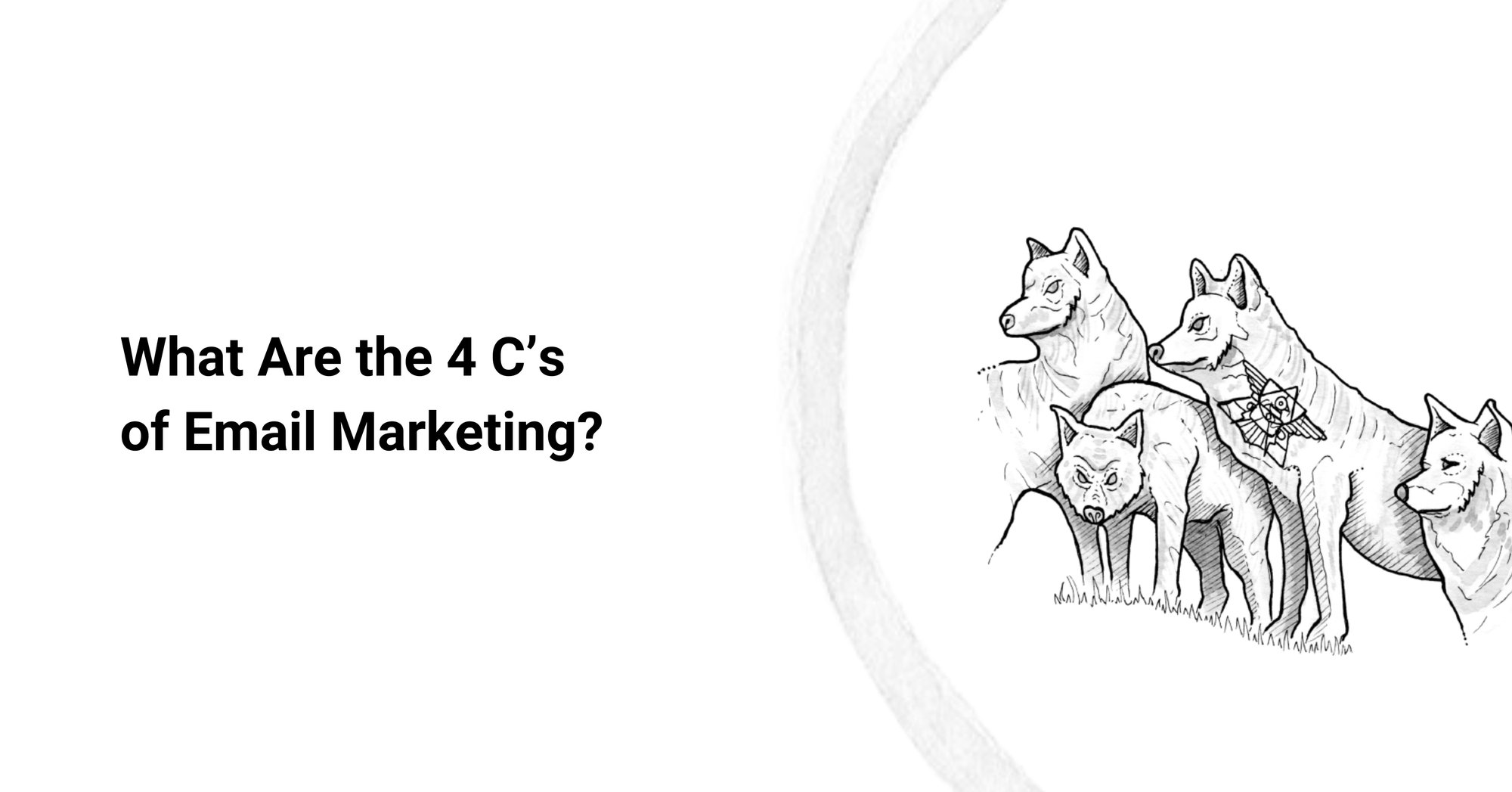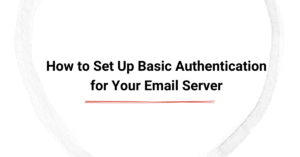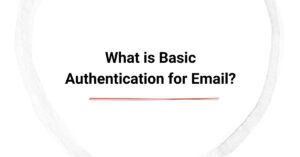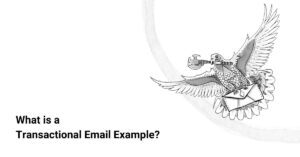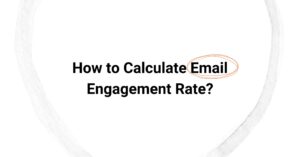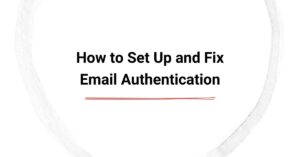Email marketing isn’t just about sending flashy templates and catchy subject lines. To truly succeed, your campaigns need to resonate with your audience, creating meaningful interactions that drive results. The 4 C’s of Email Marketing: Content, Context, Connection, and Consistency, provide a solid framework for crafting emails that do more than just fill up inboxes. They help marketers engage their audience, build trust, and improve long-term performance.
Are your campaigns falling flat? Do your email open rates and click-through rates leave much to be desired? If you focus on the 4 C’s of Email Marketing, you can create a more targeted and effective strategy that delivers lasting results. This approach emphasizes value, relevance, and human connection, all of which are the norm for boosting engagement and improving overall campaign performance.
Staying on top of emerging trends in email marketing helps you keep your campaigns fresh and aligned with what your audience expects. Let’s take a look at how these principles can really improve your email marketing.
What is Email Marketing Strategy?
An email marketing strategy is not just about sending random messages; it’s about delivering emails that are tailored to your target customer's needs. The right strategy aligns your business objectives with customer expectations and preferences, creating a strong connection from the first click.
A good strategy ensures that every email you send serves a purpose, whether it’s to educate, engage, or convert potential customers. This is where the Email Marketing Framework comes in and it helps guide every campaign towards a goal, ensuring consistency and relevance at all times, as explained in our best email marketing strategies article.
What Are the 4 C’s of Email Marketing?
The 4 C’s of Email Marketing are a comprehensive framework designed to build stronger relationships with your audience through effective email communication. These principles go beyond basic tactics and push you to think about the whole user experience—from the content they receive to how they feel about your brand.
By integrating Content, Context, Connection, and Consistency into your campaigns, you create a more meaningful and effective way of engaging with subscribers. Let’s break down how each of these elements plays a role in crafting successful emails.
Content
Definition: Content refers to the actual message or information within the email—what you're saying and how you're saying it.
Content is the heart of any email. It’s the reason your subscribers open your emails and engage with them. Well-crafted content speaks directly to their needs and interests, delivering real value.
Role: Content plays a critical role in engaging your audience and driving conversions. If your content isn’t relevant or valuable to the recipient, it doesn’t matter how good your design or subject line is—it won’t get the results you need.
Example: Content can include informative blog posts, personalized product recommendations, or limited-time offers that speak directly to the recipient’s interests.
Tips:
- Craft compelling subject lines that get your emails opened and ensure clarity in your message so recipients immediately understand the value
- Include clear CTAs (calls to action) that guide the reader toward the desired action.
- Make sure your emails offer value beyond promotions. Whether it’s educational or entertaining, always aim to offer something your audience can use.
Content is the foundation of any good email, so make sure it is consistently high-quality and resonates with your target audience.
Context
Definition: Context refers to ensuring that your message is timely, relevant, and aligns with the recipient’s current situation or interests.
Context is about making sure your emails hit the right note at the right time. Without context, even the most well-crafted emails can miss the mark. By aligning your message with what your subscribers need, you significantly increase your chances of engagement.
Role: Context makes your emails feel more personal and meaningful. A generic, one-size-fits-all email is unlikely to engage your audience. But when you send messages that align with what they need or are interested in, you increase the chances of them taking action.
Example: A cart abandonment email that reminds a customer of items left in their cart or a special offer sent after a recent purchase shows that you understand the recipient’s needs at that moment.
Tips:
- Use behavioral triggers like purchase history or page visits to send targeted emails.
- Dynamic content allows you to personalize emails for different recipients based on their preferences.
- Segment your list to send emails that are relevant to each group’s specific needs.
Context is everything. If your content is timely and relevant, you’ll see better engagement, more clicks, and higher conversion rates.
Connection
Definition: Connection is about building rapport, trust, and emotional alignment with your audience. It’s about humanizing your brand and making your emails feel less like a transaction and more like a conversation.
Connection is what transforms an email from a promotional message into a personal communication. The stronger the connection, the more likely your audience is to engage with your brand in the future. It’s essential to make your emails feel personal and relatable.
Role: Building a strong connection with your audience creates lasting relationships. When people feel connected to your brand, they’re more likely to engage with your emails and remain loyal over time. That emotional resonance can turn your email strategy into a powerful customer magnet.
Example: Using the recipient’s name in the email or referencing past behavior (like previous purchases) can make the email feel more personal and relevant. Sharing behind-the-scenes stories or customer testimonials can also strengthen emotional connections.
Tips:
- Always be authentic and transparent in your communications.
- Use storytelling to engage your audience and create a more relatable brand persona.
- Maintain a consistent tone of voice that matches your brand’s personality.
Connection is about trust. Building that trust means your audience will be more likely to open future emails and take action.
Consistency
Definition: Consistency refers to the regularity of your email communications and the uniformity in your branding and messaging.
Consistency builds familiarity. When you send emails on a regular schedule and maintain consistent messaging and design, you make your brand feel more reliable. This consistency leads to better brand recognition and trust over time.
Role: Maintaining consistency in email frequency, design, and tone helps build brand recognition and trust. When your audience knows what to expect, they’re more likely to engage with your emails.
Example: A weekly newsletter sent at the same time each week or a monthly product update with a consistent design layout. Consistency also means using the same tone of voice and visuals across all communications.
Tips:
- Use an editorial calendar to plan your email content and stick to it.
- Develop brand style guides to maintain consistent design and tone.
- Keep your emails visually consistent so they’re instantly recognizable to your audience.
Consistency helps your audience know who you are and what to expect from your emails. It strengthens your brand’s presence and improves the effectiveness of your campaigns.
Why the 4 C’s Matter in Email Marketing
The 4 C’s of Email Marketing are essential for creating campaigns that engage your audience and drive long-term results. When you focus on Content, Context, Connection, and Consistency, your emails become more meaningful and targeted, leading to improved performance.
Building Long-Term Engagement

The 4 C’s of Email Marketing help your emails not to be just one-off messages, but part of an ongoing relationship with your audience. By consistently delivering valuable, relevant, and engaging content, you increase the chances of long-term engagement. When recipients feel connected and trust your brand, they’re more likely to open and interact with your future emails.
Improving Conversion Rates
When your emails are contextual, valuable, and personalized, they’re more likely to generate clicks and conversions. By using the 4 C’s of Email Marketing, you’ll create a strategy that aligns with your audience’s needs and interests, making them more inclined to take the action you want, whether it’s making a purchase, downloading a resource, or subscribing to a service.
Strengthening Brand Perception
Consistency and connection are powerful tools for building trust and credibility. When your emails are consistent in both frequency and tone, and when you focus on creating a human connection with your audience, you strengthen your brand’s perception. A brand that is reliable, authentic, and relevant will always be viewed more favorably than one that is inconsistent or generic.
How to Apply the 4 C’s in Your Email Campaigns
Step 1 – Audit Your Existing Emails
Take a close look at your current campaigns. Do they follow the principles of the 4 C’s? Are your emails offering value, speaking to your audience’s needs, building a connection, and maintaining consistency? Identify areas where your emails can be improved and apply the 4 C’s to make them more effective.
Step 2 – Map Emails to the Customer Journey
Each stage of the customer journey requires different types of emails. For example, emails to new customers, like welcome messages, should focus on Connection and Content, while a cart abandonment email requires Context and Content. Use the 4 C’s to tailor your emails to each stage of the customer’s experience, from onboarding to re-engagement.
Step 3 – Personalize Based on Context and Behavior
Use the data you have on your customers to make your emails more relevant. By analyzing behavioral triggers such as purchase history, site visits, and email engagement, you can send more personalized emails that align with each customer’s needs and interests.
Step 4 – Plan Consistent Communication
Consistency doesn’t mean sending emails at the same frequency across the board, but it does mean maintaining regularity and reliability. Use an editorial calendar to plan out your email content and set a consistent schedule for delivery. This helps your audience know when to expect your emails and builds trust over time.
Common Mistakes and How to Fix Them
Over-Promoting Without Value
Problem: Sending too many sales-heavy emails can alienate your audience. Solution: Strike a balance by mixing in valuable, educational, or entertaining content with your promotional emails.
Ignoring Contextual Relevance
Problem: Sending irrelevant emails leads to disengagement. Solution: Use segmentation and automation triggers to ensure your emails are tailored to each recipient’s needs and preferences.
Inconsistent Brand Voice or Frequency
Problem: Sending erratic emails or using a fluctuating tone confuses your audience. Solution: Develop a consistent brand voice and stick to a regular email schedule to build familiarity and trust.
Solution: Establish a clear and consistent brand voice that reflects your values and resonates with your audience. Use editorial calendars to maintain a predictable email schedule and ensure your messaging stays aligned across all touchpoints. This consistency builds familiarity, strengthens trust, and helps establish a cohesive brand presence.
Conclusion
The 4 C’s of Email Marketing—Content, Context, Connection, and Consistency—are essential for crafting email campaigns that resonate and drive results. By focusing on delivering valuable content, ensuring contextual relevance, building connections with your audience, and maintaining consistency, you’ll create more engaging and high-converting campaigns.
Apply these principles to elevate your email marketing efforts and foster long-term relationships with your subscribers.
Ready to elevate your email game with the 4 C’s? Talk to our strategy team today to build high-converting, audience-first campaigns.

